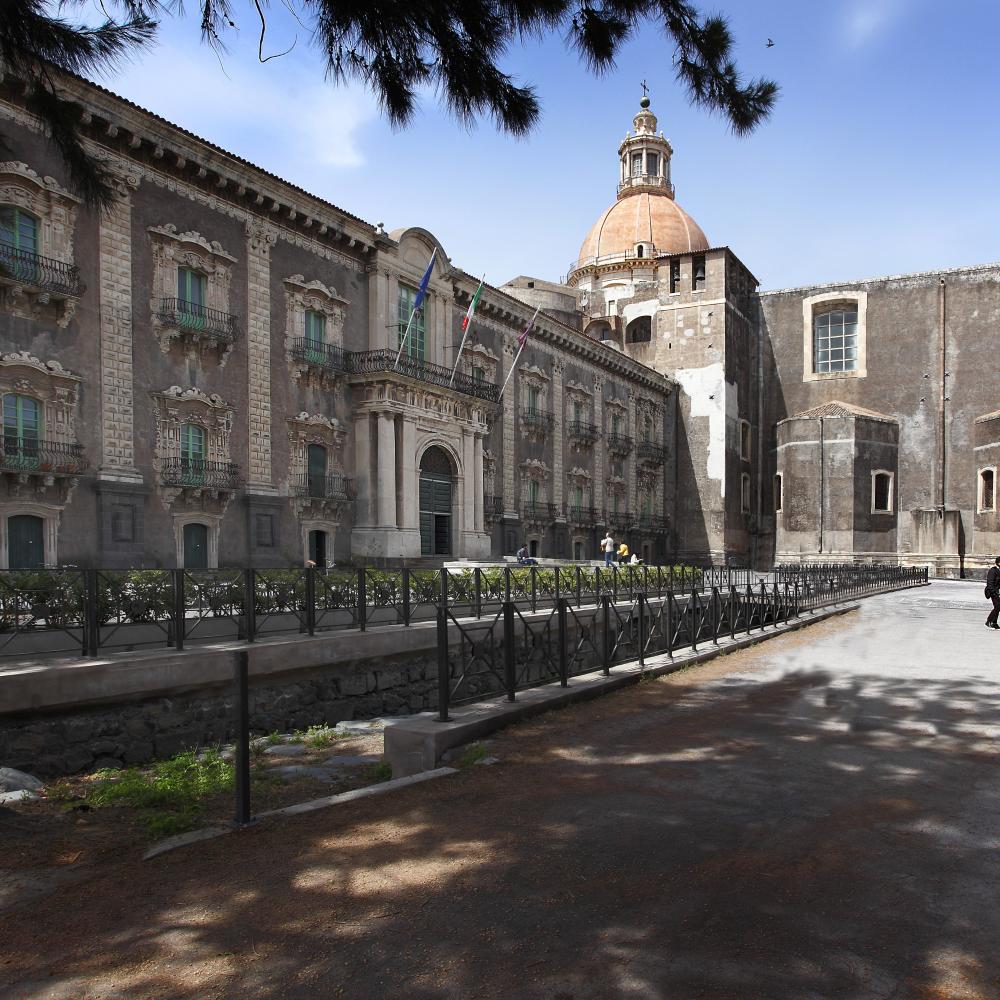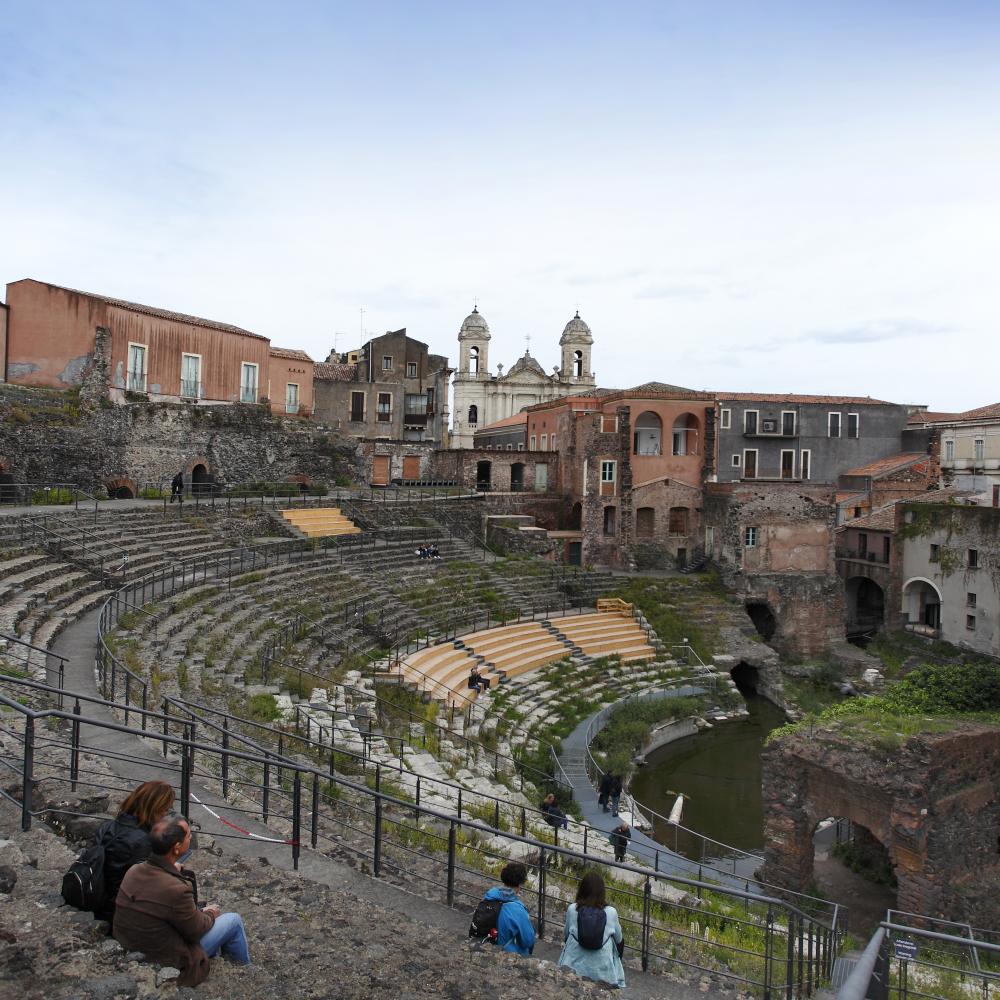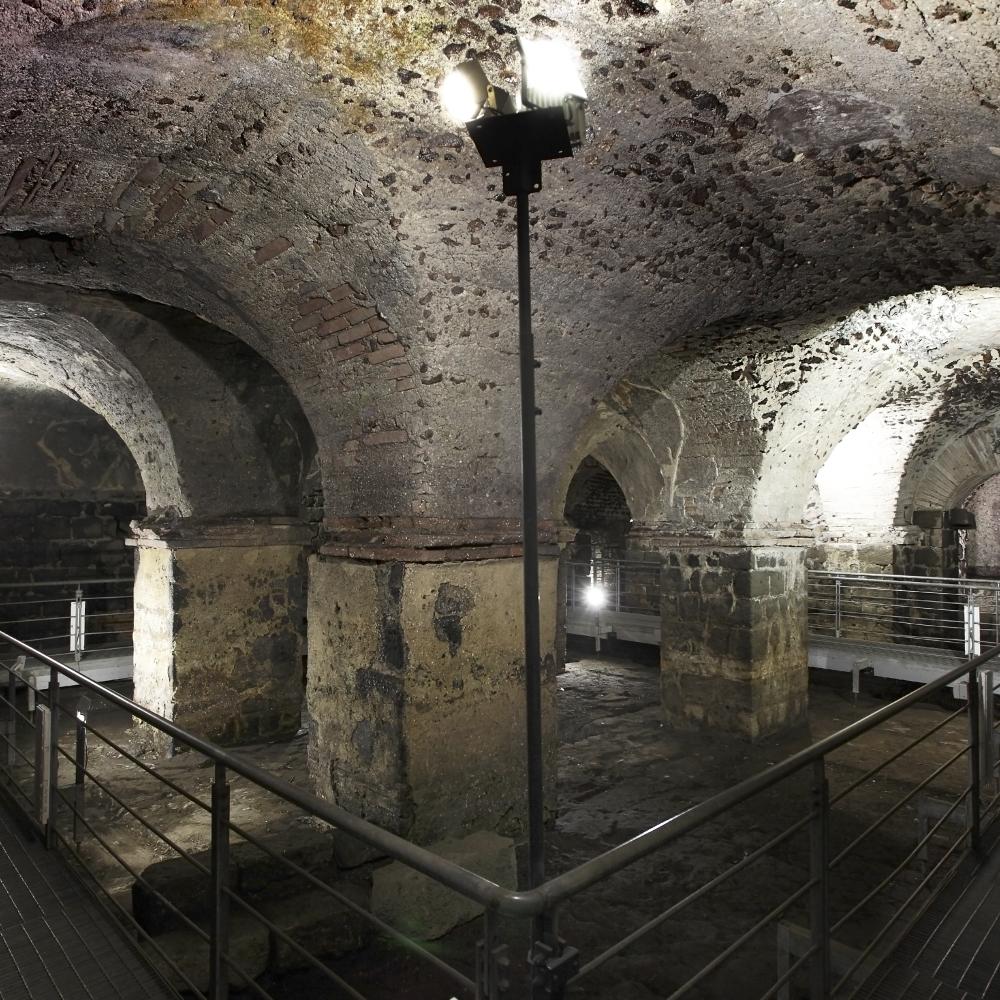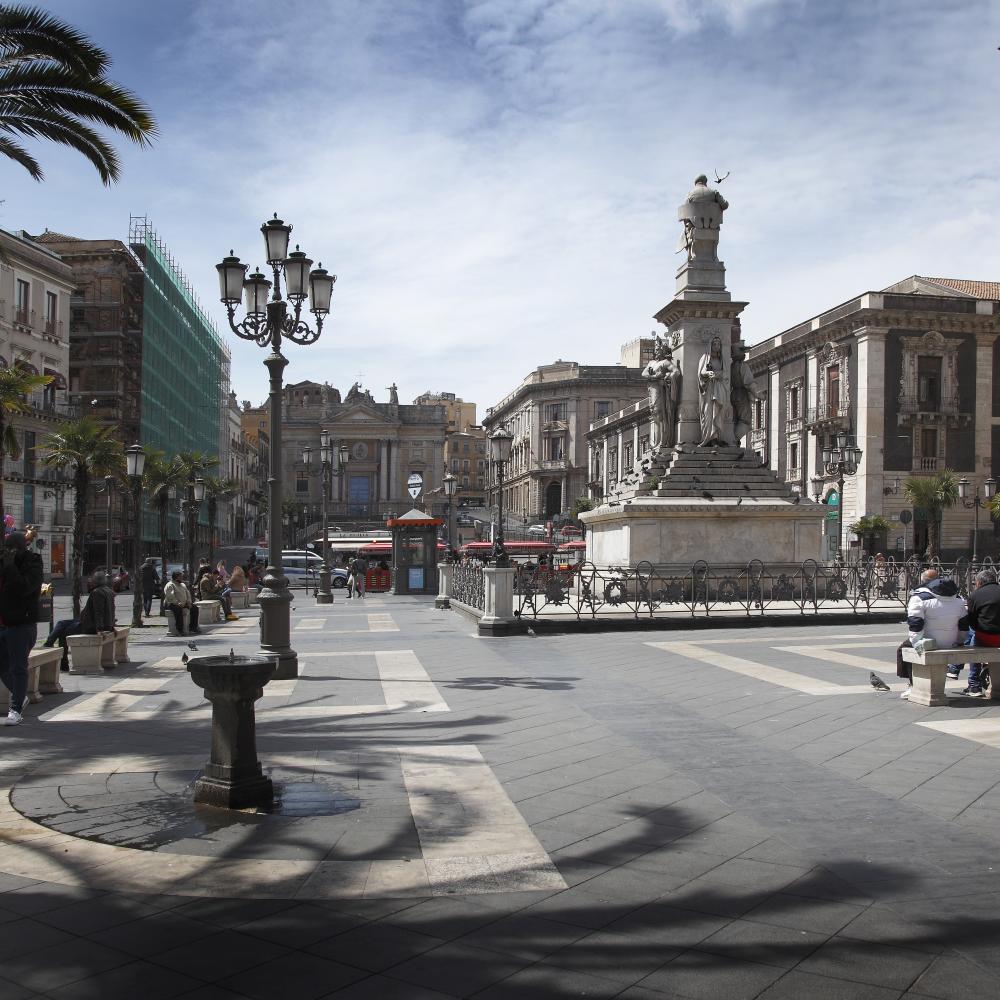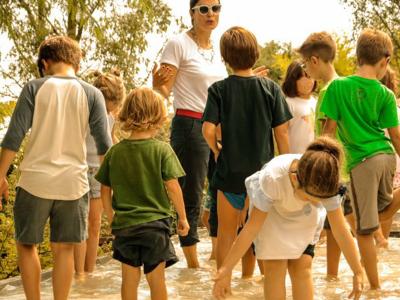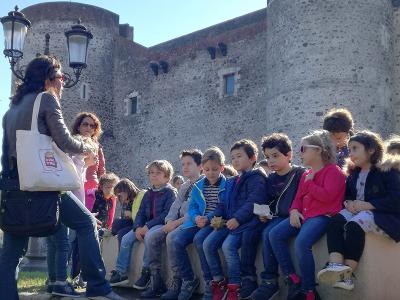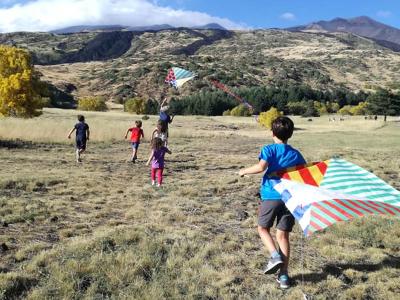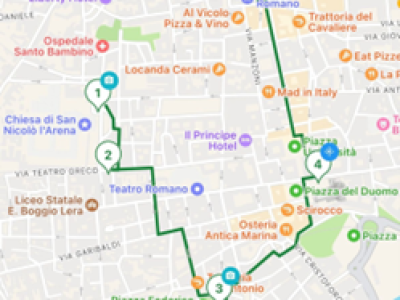Do you know that the current city of Catania stands on different layers of land? Well yes, they testify to the presence of the different peoples who inhabited it in the past: Sicilians, Sicans, Greeks, Romans, Ostrogoths, Byzantines, Arabs, Normans, Germans, French, Aragonese and Spanish, until when, in 1860, it was then annexed to the Kingdom of Italy.
A bit of history…
Catania keeps unchanged the name of the Greek colony, Katane, founded, according to the historian Thucydides, in 729 BC. by the Chalcidian settlers, founders of nearby Naxos. The city, protected by the port and bathed by the Amenano river, had a particularly strategic position and very fertile ground. The old polis extended into the area now occupied by the Benedictine Monastery, Piazza Dante and Castello Ursino, where in the Greek period the acropolis, the agora and the theater were respectively located. Later, during the Roman domination, starting from 263 BC. Catina (Catania) became a colony of the Empire and experienced a very flourishing period.
Curiosity!
According to the historian Plutarch, the name Katane derives from the Greek 'grater' precisely to refer to the geological conformation of the lava territory on which the city stands.
Following the nine documented destructions, among which we recall earthquakes and eruptions, such as that of 1669 which almost entirely covered the city, Catania has always risen from its ashes, even more beautiful and splendid, like the Phoenix, symbol of immortality, which towers over the triumphal arch Ferdinandeo in Piazza Palestro. MELIOR DE CINERE SURGO – ALWAYS BETTER REBIRTH FROM MY ASHES. Plutarch, a Greek scholar, called it the "ever-flowering city". For this reason, the subsoil of Catania, still to be discovered today, holds historical treasures belonging to the populations of the past.
Do you know what an archaeological excavation is?
The technique with which the archaeologist brings to light the monuments and objects that belonged to the peoples who inhabited the Earth before us. Ceramics, coins, artifacts of all kinds allow us to reconstruct our history. All the findings are then kept, valued and exhibited in museums.
In the footsteps of the Greek and Roman dominations.
Kids Trip offers you an itinerary to follow, to discover the testimonies that the Greek and Roman peoples have left us, through the visit of some archaeological sites and the artifacts kept in the various museums of the city, such as the archaeological museum of Palazzo Ingrassia and the museum number of Ursino Castle.
Ready Set Go!
Our proposal for a historical-cultural itinerary starts from the hill of Montevergine, in today's Piazza Dante, where the Greek acropolis stood in ancient times, the center of political and economic life, which was replaced by the cardi and decumani (roads) in Roman times. It is no coincidence that in the sixteenth-century basement of the splendid Benedictine monastery, located in this area, two recently restored Roman domus can still be admired.
Continue your tour with a visit to Palazzo Ingrassia, an imposing structure built on the remains of a Roman Nymphaeum, which also belongs to the Monastery complex. Headquarters of the humanistic studies of the University of Catania, the building also includes an archaeological museum divided into five rooms, according to a time scan that goes from Prehistory to the Middle Ages. Testimonies of Greek and Roman Catania are exhibited and kept here.
Curiosity!
The Officine Culturali Association periodically proposes child-friendly initiatives, which can be consulted on the web page. Here are the most popular ones:
"The potter's workshop", where the little ones will be able to learn about ancient history and the construction techniques that were used for the creation of ancient artifacts, also participating in a playful educational workshop that will allow them to set creativity in motion , through the creation of an earthenware vase;
"Little archaeologists", where participants will be involved in an exploratory expedition to discover the remains of antiquity, to then conclude with the simulation of an archaeological excavation.
Greek-Roman Theater and Odeon
Your tour continues to the Greek-Roman Theater, about 5 minutes from Piazza Dante, located in the heart of Catania, in Via Vittorio Emanuele, 266. The theater structure, dating back to Roman times, was built on a pre-existing Greek theater and could accommodate about 7 thousand spectators. The orchestra, the cavea and some remains of the scene are still visible today. It was built in lava stone and decorated with marble, later used for the construction of the Cathedral of Catania. A few steps away we find the Odeon, where dancing shows, concerts and poetry competitions were staged, still used today for summer shows.
Curiosity!
The Greek and Roman peoples gave great importance to the care of the body and mind, this happened
also through the choice of food. Their diet was very varied and included oil, bread, wine, cheese, legumes, vegetables, meat and fresh fish. Sharing good food played a fundamental role in their daily habits.
civic Museum
In Piazza Federico II di Svevia, also the Civic Museum, located inside the imposing Castello Ursino since 1934, houses important historical collections, just like those of the Hellenistic and Roman periods.
Curiosity!
Did you know that the Romans also played ball? They usually played before bathing in the spa. The baths were very popular buildings in Roman times, covered with marble and colored stones, with hygienic-sanitary purposes, but also for entertainment and socialization.
Achillian Baths.
Even Catania had its thermal baths! We suggest a short visit to the Achillian baths, one of the most important buildings of the Roman age, which is worth a visit! Accessible from a door on the right side of the facade of the Cathedral of Catania, frescoes from the classical era are still visible in the structure. In them it is also possible to see the flow of the Amenano river and glimpse the foundations of the elephant fountain.
Conclude your tour of Greek-Roman Catania with a nice walk from Piazza Duomo, along the famous Via Etnea, which will lead you to Piazza Stesicoro, where you can admire the remains of the Roman amphitheater. During the journey, it will be possible to enjoy a good ice cream or a good typical Sicilian sweet in one of the most renowned bars in the city, such as the historic Prestipino Cafè or the colorful Don Peppinu, which will surely capture the sight ... and the palate ... of the little ones!
Curiosity!
The archaeological sites of the Greco-Roman era, which you will visit during your tour of the city, have been brought to light since 1768, thanks to Prince Ignazio Biscari, an illustrious figure of Catania in the 18th century. In addition to promoting the excavations, he actively participated in some of them. Among the most important ones we remember the Greek-Roman Theater, the Achillian Baths and the Amphitheater.
Roman amphitheater.
One of the largest amphitheaters of the Roman era is preserved under the palaces and churches of the city of Catania. The Amphitheater, built in the 2nd century AD. C. in red bricks and lava stone, it is part of the Greek-Roman archaeological park of Catania, and is only partially visible from Piazza Stesicoro. From here it will be possible to glimpse the bleachers on which the spectators sat to watch the gladiator fights, the fights of wild animals and other shows that took place in the central arena.








